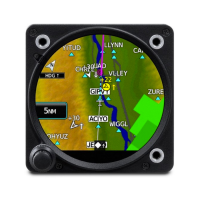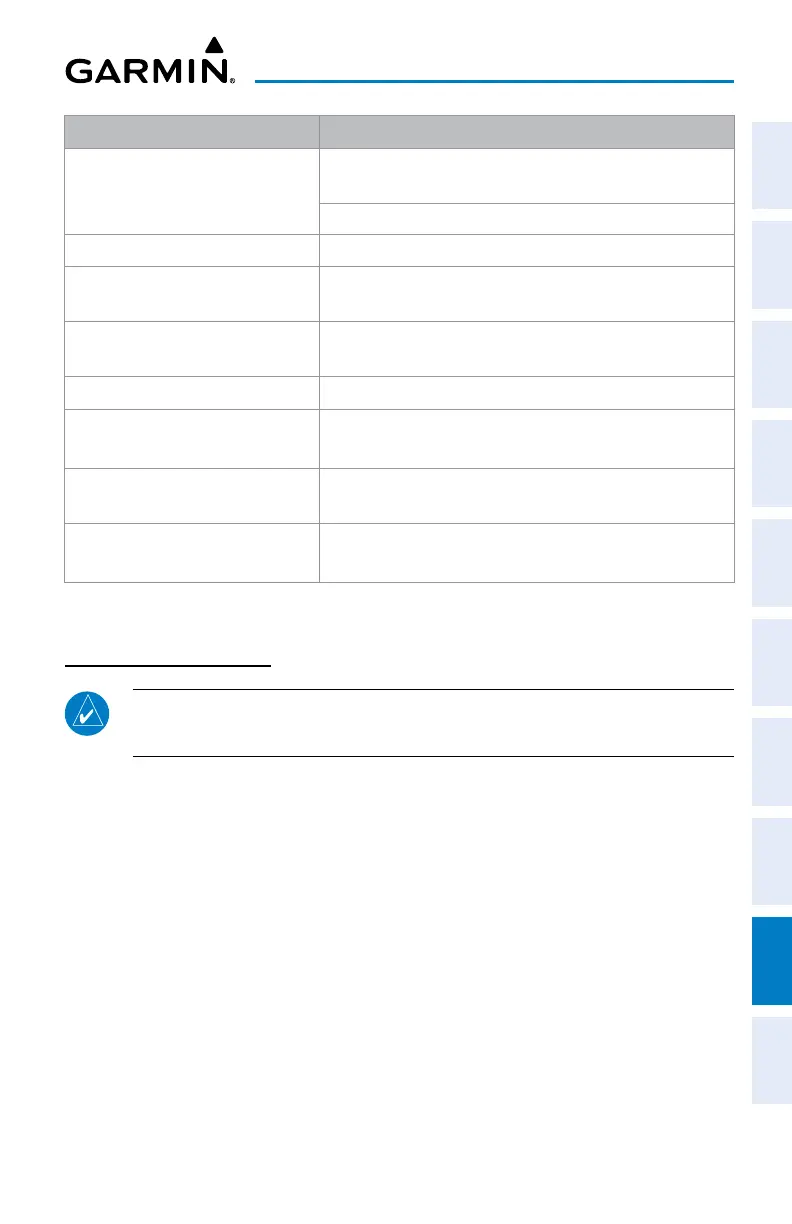Garmin GI 275 Pilot's Guide190-02246-01 Rev. L
275
Appendix A
System
Overview
Flight
Instruments EIS Navigation
Hazard
Avoidance Autopilot IVSI
Additional
Features Appendices Index
Message Description
Traffic/FIS-B functions
inoperative
UAT receiver capable ADS-B LRU reports electrical fault,
calibration data fault, SW CRC Fault, or FPGA CRC Fault
Communication is lost with UAT receiver capable ADS-B LRU
UAT fault
The UAT LRU reports a low battery or fan fault
UAT traffic/data receiver fault
The ADS-B LRU reports that it is unable to receive UAT traffic
and FIS-B data
USB and WiFi Unavailable
While on internal battery operation, the unit conserves energy
by disabling these functions.
VFR GPS is being used
VFR GPS is being used
ADC <1/2/3> error correction
inoperative
An ADC reports airspeed error correction is unavailable.
GSA 28 servo clutch stuck
GSA 28 Pitch, Pitch Trim, Roll, or Yaw stuck clutch detected.
Service needed.
Primary/Main Bus Power
Failed
Primary/Main Bus Power supply has failed.
System Messages
GLOVE QUALIFICATION
NOTE:
The procedures described in this section should only be performed while the
aircraft is on the ground.
The touchscreen uses capacitive touch technology to sense the proximity of skin to the
display. A glove creates a barrier between the skin and the display glass, potentially reducing
the ability of the display to detect touches.
This procedure can be used to qualify a glove intended for use with the touchscreen. It is
highly recommended to use capacitive touch gloves, as the touchscreen uses capacitive touch
technology. Due to differences in finger size, glove size, and touchscreen between the MFI, the
qualification procedure is specific to the pilot/glove and MFI combination.
Glove Selection Considerations
» Thinner gloves perform better than thicker gloves.
» Leather gloves, and gloves designed specifically for use with capacitive touchscreen
devices, are often found to be acceptable.
» To improve touchscreen sensitivity while wearing gloves, use the pad of the finger
instead of the tip during touch interactions.

